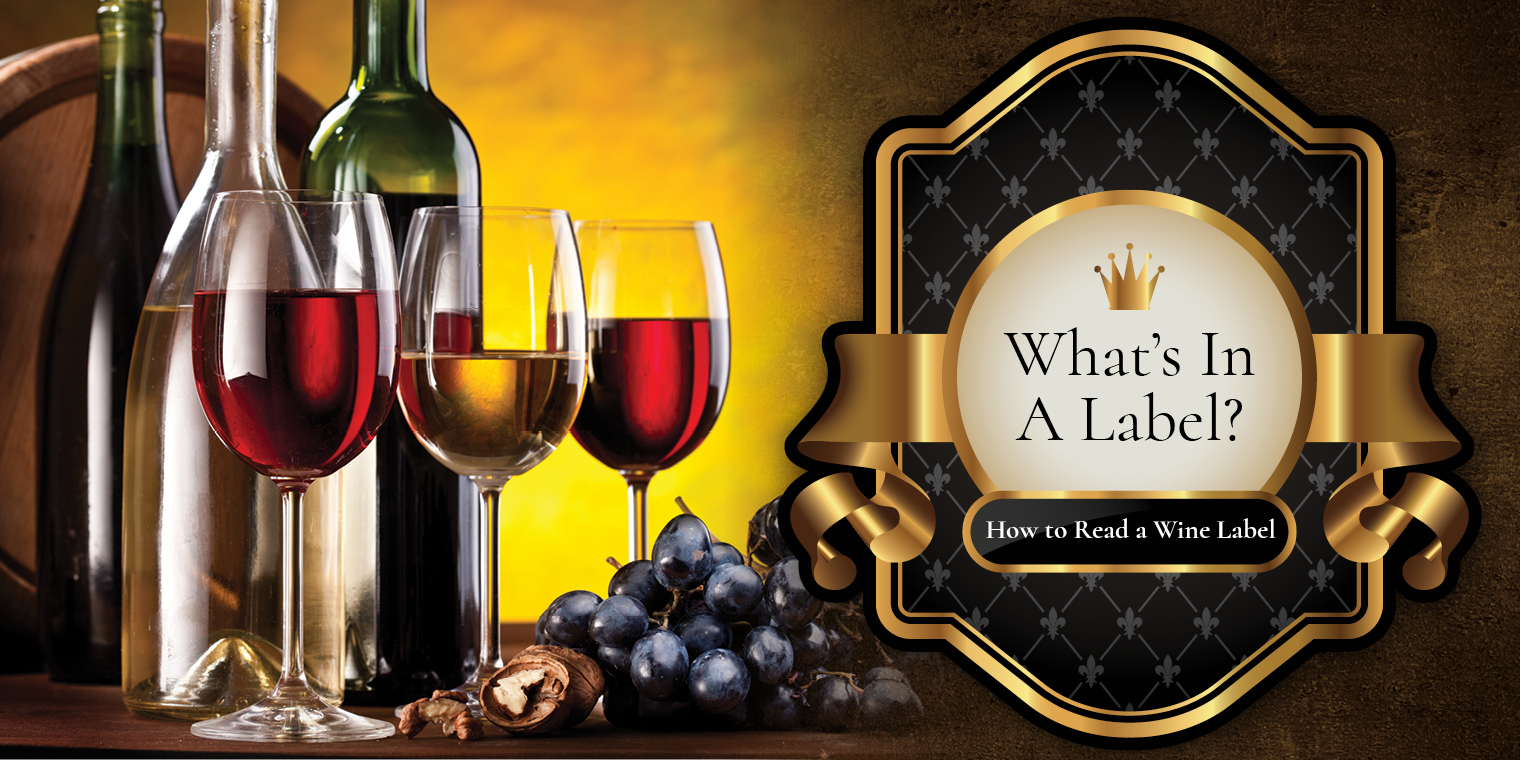When selecting a bottle of wine, the first thing you notice on the shelf is the wine’s label. Perhaps it’s the bright colors, or the catchy name that turns your eye. But there is so much more to a wine label than a pretty picture or a graphic logo.
There are many parts to a wine label: the wine producer, the region in which it was produced, the vintage or year produced, the grape variety or appellation, the ABV or alcohol by volume percentage, and the bottle volume. It may also list the wine type or class.
In the United States, there are strict laws on what must be shown on a wine label, a process managed by the Alcohol and Tobacco Tax and Trade Bureau (TTB). By law, U.S. wine must carry the brand name, producer’s name and address, wine type, bottle volume, the alcohol and sulfite content, and a government health warning.
Brand Name
The brand name typically lists the producer or vineyard, but in more recent times, a more fanciful name is used for additional marketing appeal.
Producer and Bottler
Many wine producers use their own name as the wine’s brand. If a different brand name or logo is used, the producer and bottler of the winery who made, or the estate, it is listed at the bottom of the label. For an Estate Bottled wine, 100% of the grapes must be grown, crushed, fermented, finished and bottled on the same property.
Wine Type and Wine Region
The type of wine, or class, is listed, such as Pinot Grigio or Cabernet Franc. Or the label could just indicate a sparkling wine or table wine. A varietal wine will list one type of grape like Sauvignon Blanc (but only 75% of the actual content is required to come from that varietal). A blend may or may not list the types of grapes.
In place of the class indication, an American Viticultural Area (AVA) title or varietal type may also be used. AVA classifications refer to the wine region in which the grapes were grown. To carry an AVA title, a minimum of 85% of the grapes must be grown within that particular AVA (or 75% for a state- or county-level AVA). For a varietal label, no less than 75% of that grape variety must be used in that wine.
Appellation refers to where the wine was made, whether it refers to an entire state, like Virginia, or a specific vineyard. For Old World labels, the terms “Appellation Controlee” or “Denominazione della Origine Controllata” refer to legally-regulated regions of wine production.
Vintage
Although not mandatory, you will most often see the year that the wine was produced. To qualify, at least 95% of the grapes must be from that vintage, or picked in that year. This is important if there was a particularly good wine made in a specific year and you want to purchase that wine again.
Alcohol Content
In the United States, if a wine contains more than 14% ABV the alcohol content must be explicitly stated. For bottles containing less than 14% ABV, options include the generic label of “table wine” or listing of the specific alcohol content. For wines with a less-than-14% ABV content, there is an allowable 1.5% up or down variance, however, for wines with more than 14%, the variance drops to 1%. The actual alcohol content may differ from the label due to this variance, as ABV content of more than 14% is charged a higher excise tax by the TTB than those under. In addition, so as not to scare consumers off from higher-alcohol wines containing 15% or 15.5% ABV, these wines are often listed as 14%. Most table wines fall between 11.5% and 14.5% ABV. Wines lower in alcohol content are generally considered to be “lighter” in style.
Volume
The bottle volume may be listed in fluid ounces, liters or milliliters.
Sulfites
If a wine contains more than 10 parts per million (ppm) of sulfur dioxide, the sulfite declaration must be listed on the label. If a wine is labeled as “organic,” it must not contain any artificially-added sulfites, however, wine “made with organically-grown grapes” does contain some sulfites.
Government Health Warning
This is a mandatory label requirement for all alcoholic beverages sold in the U.S.
Sweetness Levels
Wines that contain higher residual sugar content may list on their labels classifications including Extra Brut (driest), Brut, Extra-Dry, Sec, Demi-Sec and Doux. For sweet wines, you may see the terms Dry (least sweet), Semi-Dry, Semi-Sweet and Sweet.
European Union Wine Labels
Roughly 70% of the world’s wines are produced in the 27 member states of the European Union, which as classified into two categories: PDO and PGI, additional designations you may see on a wine label.
PDO
PDO, or Protected Designation of Origin, products are “produced, processed and prepared in a given geographical area, using recognized know-how,” states the EU definition. This refers to the quality and properties that are exclusively determined by their environment, with factors whether natural or human.
PGI
PGI, or Protected Geographical Indication, defines a product that is closely linked to the geographical area in which it is produced, processed or prepared. It must also have specific qualities it can attribute to that geographical area. Some of the more respected wines fall into this category, such as those from Tuscany.
Now that you know what the wine labels mean, go out there and enjoy some of our fabulous Virginia wines!






